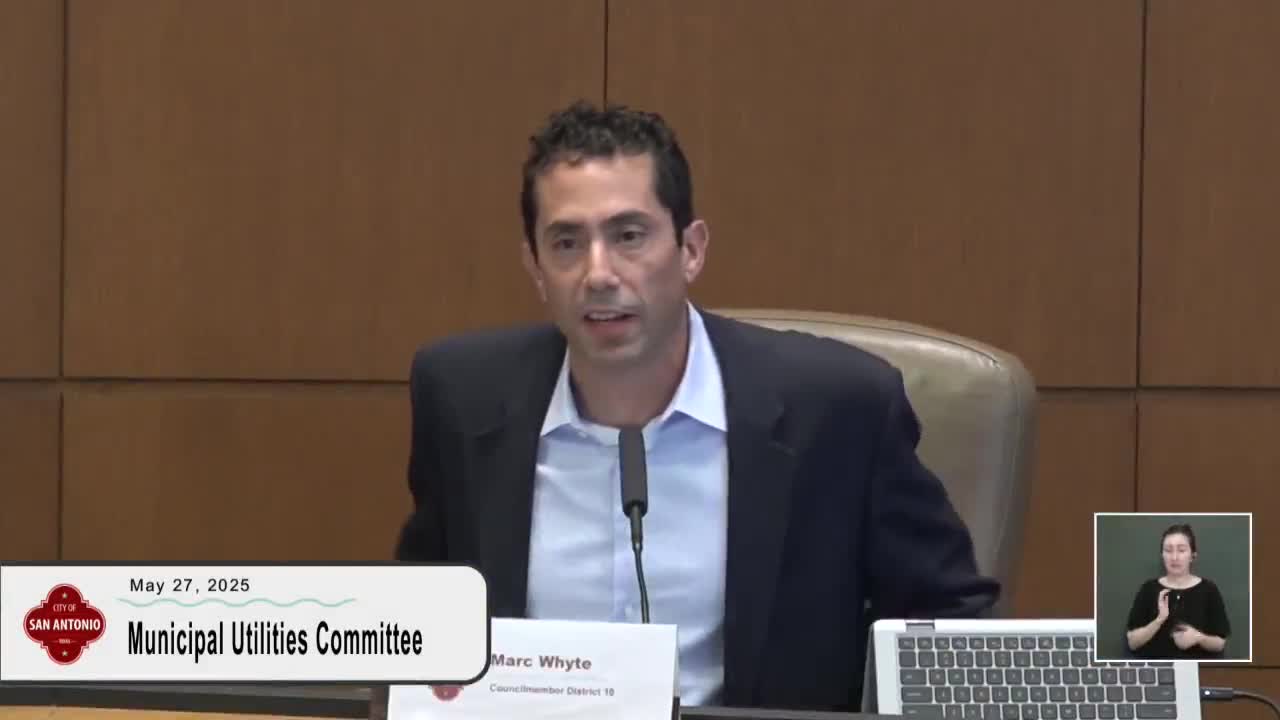San Antonio implements AI tools to identify and repair water leaks in aging pipelines
May 27, 2025 | San Antonio, Bexar County, Texas
This article was created by AI summarizing key points discussed. AI makes mistakes, so for full details and context, please refer to the video of the full meeting. Please report any errors so we can fix them. Report an error »

In a recent government meeting focused on municipal utilities in San Antonio, officials addressed the pressing issue of aging water infrastructure and its impact on the community. The discussions highlighted the challenges posed by drought conditions and soil movement, which have contributed to the deterioration of the city’s extensive network of over 80,000 miles of pipes.
Officials noted that the age of the pipes plays a significant role in the frequency of leaks, with soil expansion and contraction exacerbating the problem. As a result, the city anticipates substantial expenditures in the coming years to mitigate water loss. Currently, efforts to identify and repair leaks have shown some progress, with a reported 40% reduction in response times to known leaks and a 10% decrease in overall water loss over the past year.
The meeting emphasized the importance of advanced technology in leak detection. The city has implemented artificial intelligence tools to assess the condition of major pipelines, allowing for more efficient identification of leaks. Despite these advancements, officials acknowledged that many leaks remain undetected, indicating a significant amount of work still lies ahead.
In addition to leak detection, the discussions underscored the need for a comprehensive leak protection plan that integrates both human resources and technological solutions. As repairs often require street excavation and subsequent repaving, the city is committed to balancing infrastructure improvements with minimal disruption to residents.
Overall, the meeting served as a critical reminder of the ongoing challenges facing San Antonio’s water infrastructure and the city's commitment to addressing these issues through innovative solutions and strategic planning. As the city moves forward, residents can expect continued efforts to enhance the reliability of their water services while managing the complexities of an aging system.
Officials noted that the age of the pipes plays a significant role in the frequency of leaks, with soil expansion and contraction exacerbating the problem. As a result, the city anticipates substantial expenditures in the coming years to mitigate water loss. Currently, efforts to identify and repair leaks have shown some progress, with a reported 40% reduction in response times to known leaks and a 10% decrease in overall water loss over the past year.
The meeting emphasized the importance of advanced technology in leak detection. The city has implemented artificial intelligence tools to assess the condition of major pipelines, allowing for more efficient identification of leaks. Despite these advancements, officials acknowledged that many leaks remain undetected, indicating a significant amount of work still lies ahead.
In addition to leak detection, the discussions underscored the need for a comprehensive leak protection plan that integrates both human resources and technological solutions. As repairs often require street excavation and subsequent repaving, the city is committed to balancing infrastructure improvements with minimal disruption to residents.
Overall, the meeting served as a critical reminder of the ongoing challenges facing San Antonio’s water infrastructure and the city's commitment to addressing these issues through innovative solutions and strategic planning. As the city moves forward, residents can expect continued efforts to enhance the reliability of their water services while managing the complexities of an aging system.
View full meeting
This article is based on a recent meeting—watch the full video and explore the complete transcript for deeper insights into the discussion.
View full meeting
